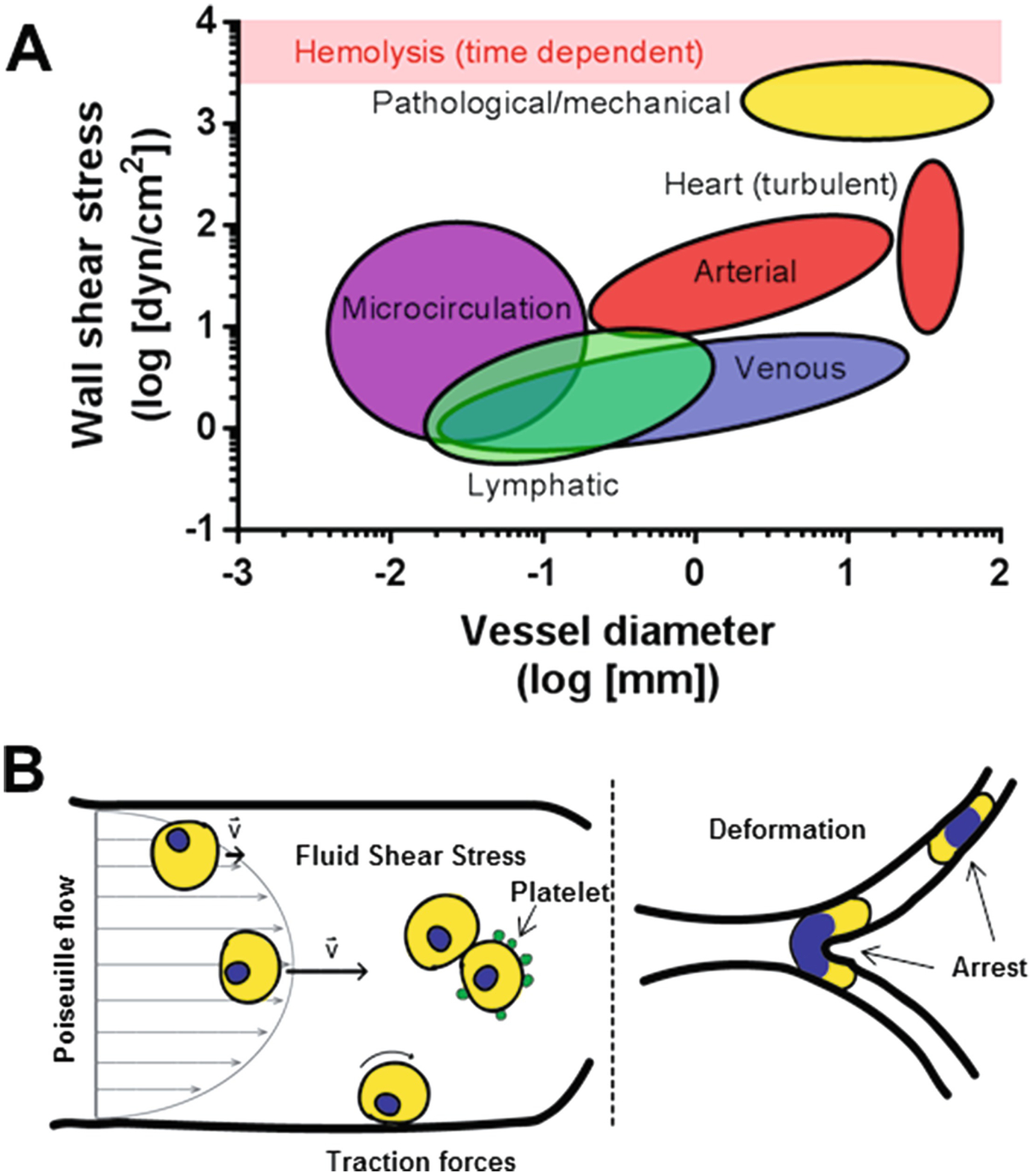Fig. 11.1.

(a) Range of wall shear stress (WSS) related to vessel diameter in physiologic and pathophysiologic conditions based on [13–25]. Ovals represent approximate values in different parts of the vasculature. The level of WSS associated with hemolysis is indicated by the red bar, though it is important to note that this is dependent on the time of exposure. (b) Representation of different hemodynamic forces encountered by CTCs. Fluid shear stress (FSS) can be calculated under conditions of Poiseuille flow where the maximum is at the vessel wall and the minimum is at the vessel axis. CTCs may associate with each other or with other blood components such as platelets which could influence the level of FSS encountered. Traction forces, generated by adherence of CTCs to the vessel wall under flow, may be encountered by CTCs under certain circumstances. Once in the microcirculation the arrest and deformation of the relatively large CTCs may also be destructive
